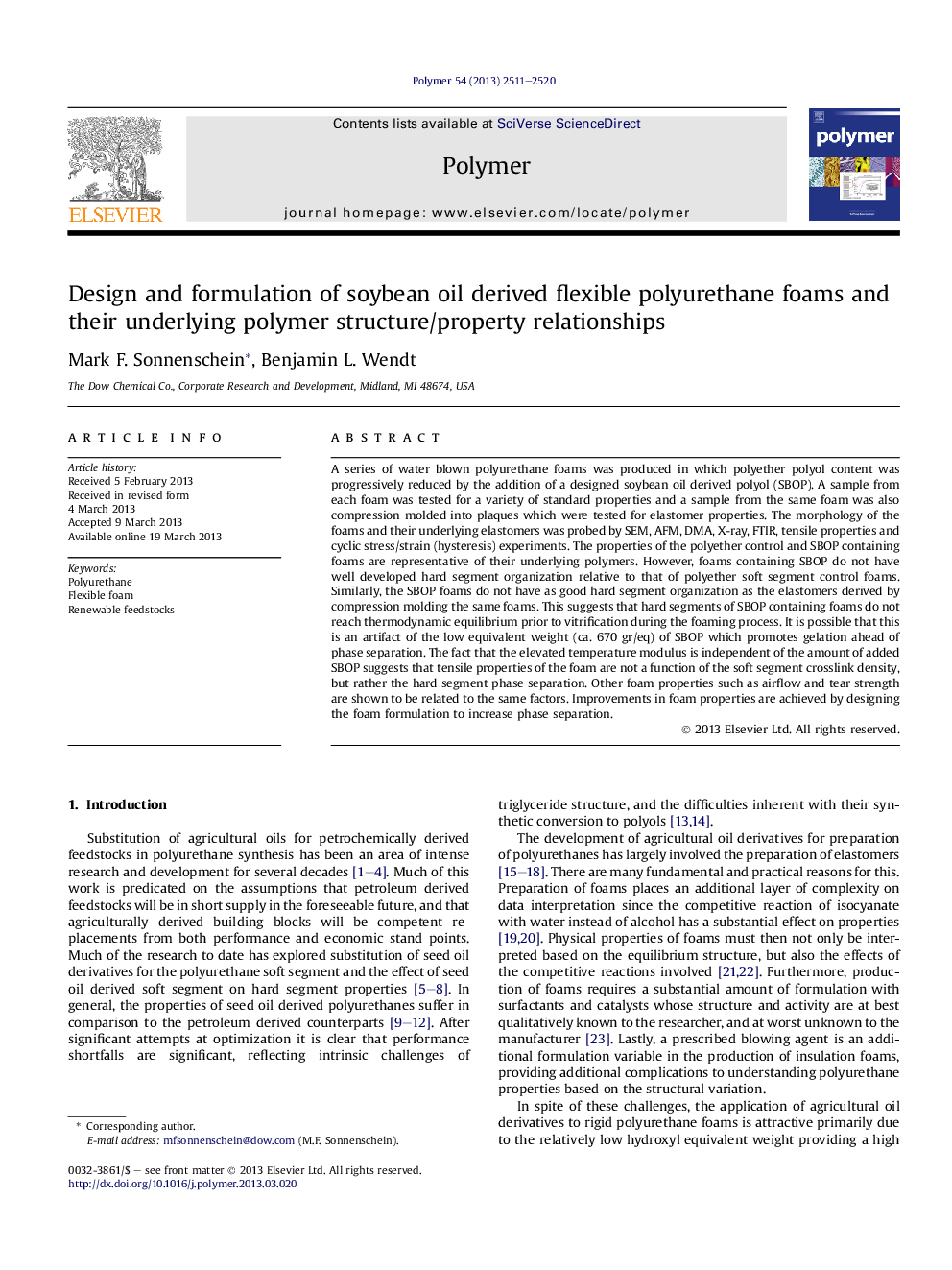| Article ID | Journal | Published Year | Pages | File Type |
|---|---|---|---|---|
| 5181948 | Polymer | 2013 | 10 Pages |
A series of water blown polyurethane foams was produced in which polyether polyol content was progressively reduced by the addition of a designed soybean oil derived polyol (SBOP). A sample from each foam was tested for a variety of standard properties and a sample from the same foam was also compression molded into plaques which were tested for elastomer properties. The morphology of the foams and their underlying elastomers was probed by SEM, AFM, DMA, X-ray, FTIR, tensile properties and cyclic stress/strain (hysteresis) experiments. The properties of the polyether control and SBOP containing foams are representative of their underlying polymers. However, foams containing SBOP do not have well developed hard segment organization relative to that of polyether soft segment control foams. Similarly, the SBOP foams do not have as good hard segment organization as the elastomers derived by compression molding the same foams. This suggests that hard segments of SBOP containing foams do not reach thermodynamic equilibrium prior to vitrification during the foaming process. It is possible that this is an artifact of the low equivalent weight (ca. 670 gr/eq) of SBOP which promotes gelation ahead of phase separation. The fact that the elevated temperature modulus is independent of the amount of added SBOP suggests that tensile properties of the foam are not a function of the soft segment crosslink density, but rather the hard segment phase separation. Other foam properties such as airflow and tear strength are shown to be related to the same factors. Improvements in foam properties are achieved by designing the foam formulation to increase phase separation.
Graphical abstractDownload full-size image
